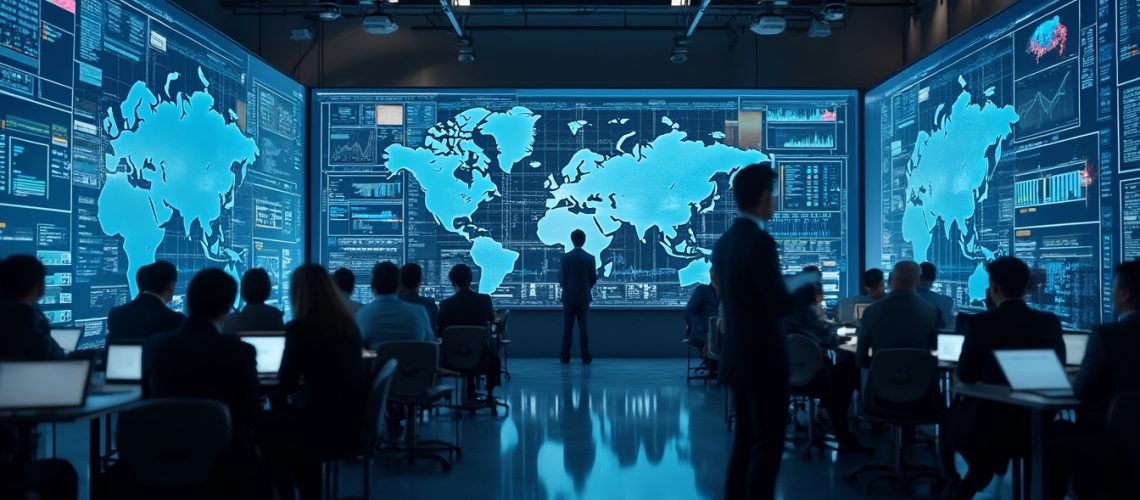The global ferro-alloys industry is approaching a pivotal year in 2025, with numerous dynamic factors poised to influence its direction. From fluctuating energy costs to geopolitical tensions, traders and industry experts are closely examining the landscape to anticipate market shifts. Understanding these elements is crucial for stakeholders aiming to navigate the complexities of the global ferro-alloys market effectively.
What Market Developments Are Traders Anticipating?
Steel Output Landscape
The steel output landscape is a major determinant of ferro-alloys demand, presenting both challenges and opportunities for traders. Global steel production is projected to experience modest growth, largely driven by potential reductions in energy costs and improvements in market conditions. European markets, in particular, have faced significant economic pressures due to high energy prices, but there is optimism that these pressures may ease in the coming year.
"An upturn in activity among steel producers – perhaps supported by lower input costs, including energy – would be a boon to alloys markets," notes Holly Chant from Fastmarkets. This highlights the critical link between energy expenses and industrial productivity. Indeed, the European steel association Eurofer has issued stark warnings about the potential for irreversible decline in the region's manufacturing sectors if high energy costs persist. Stabilising energy prices is, therefore, essential for market recovery and growth.
Technological Advancements in Energy Storage
Moreover, the adoption of renewable energy technologies is influencing demand for specific ferro-alloys. The rapid growth of vanadium redox flow batteries, especially in China, is creating emerging opportunities in vanadium demand. This technology is expanding vanadium's traditional applications beyond steel production into the energy storage sector.
"More and more vanadium-related storage projects are launching or will be launched in the coming years, especially in China, which will certainly require increasing the amount of upstream vanadium raw materials," says a China-based vanadium trader.
How Are Geopolitical Factors Influencing Ferro-Alloys Trade?
Impact of the Russia-Ukraine Conflict
Geopolitical tensions, particularly the ongoing Russia-Ukraine conflict, have substantially disrupted ferro-alloys pricing and trade dynamics. The conflict has created significant economic volatility, causing initial price spikes followed by sudden declines due to weak end-user demand.
A potential resolution to the conflict could bring transformative changes to the market. As one ferro-alloys trader suggested, "If the war ends, it could bring greater economic stability, improved demand, and lower energy prices in Europe." Such developments would be welcomed by industry players seeking stability and growth in the market.
Trade Policy Uncertainties
Additionally, evolving international trade policies are affecting the ferro-alloys trade. Protectionist measures and resource nationalism are expected to be key themes, with exporting countries potentially adopting more isolationist trade policies to exert greater control over their natural resources.
"The potential for expanded US protectionist measures looms large over the ferro-alloys landscape. Resource nationalism is expected to be a key theme, which could lead to significant shifts in supply dynamics," notes an industry analyst. These policy uncertainties could lead to a complex reconfiguration of global trade, potentially increasing competitively priced steel exports from countries like China and fundamentally altering established trading patterns.
What Are the Critical Challenges Facing the Ferro-Alloys Industry in 2025?
Market Volatility Concerns
Manganese ore prices have demonstrated extreme volatility, with significant fluctuations observed throughout 2024. Prices peaked at $9.01 per dry metric tonne unit (dmtu) in mid-July before plummeting below $4 per dmtu later in the year.
Market participants have expressed a collective hope for greater upstream market stability to reduce cost uncertainty and facilitate more predictable business planning. The volatility not only impacts profitability but also complicates long-term strategic planning for companies across the supply chain.
Logistical Disruptions
The Red Sea shipping crisis has introduced substantial complications for global ferro-alloys transportation. Major shipping companies have been forced to reroute around Africa's Cape of Good Hope, resulting in longer lead times and increased shipping costs. This disruption has particularly impacted the supply of high-carbon ferro-chrome from key production hubs like India, creating additional challenges for European markets.
What Strategies Should Ferro-Alloys Traders Adopt?
Recommended Risk Mitigation Strategies
In the face of these challenges, traders are advised to prioritise supply chain diversification and maintain technological adaptability. Flexible supply chain management has become crucial in navigating the complex and volatile global trade environment.
Key strategies include:
- Developing multiple supplier relationships to mitigate the risk of supply disruptions.
- Investing in advanced risk management technologies to proactively manage market volatility.
- Maintaining continuous market intelligence monitoring to stay ahead of industry trends.
- Enhancing logistical flexibility to adapt to shipping disruptions and delays.
Key Performance Indicators to Watch
Traders should closely monitor these key performance indicators to watch to make informed decisions and adapt their strategies accordingly:
- Steel demand levels – Directly influence ferro-alloys consumption.
- Energy price trends – Significant impact on production costs and market competitiveness.
- Battery material adoption rates – Particularly in emerging technologies like vanadium redox flow batteries.
- Geopolitical stability metrics – Affect global trade dynamics and policy frameworks.
- Logistical efficiency indicators – Shipping costs and lead times impact supply chain effectiveness.
FAQ: Ferro-Alloys Market Insights
What are the primary market drivers in 2025?
The ferro-alloys market will be primarily driven by:
- Global steel production demand – As steel production increases, so does the demand for ferro-alloys.
- Renewable energy storage technologies – Growth in technologies like vanadium redox flow batteries expands application of certain alloys.
- Evolving international trade policies – Changes in trade agreements and policies can affect import/export dynamics.
How can traders navigate market uncertainties?
Successful traders in 2025 will:
- Maintain flexible supply chains – Diversify suppliers to reduce dependency on any single source.
- Embrace technological adaptation – Leverage advanced analytics and risk management tools.
- Continuously monitor market intelligence – Stay informed about industry trends and shifts.
- Develop robust risk management frameworks – Prepare for volatility in prices and supply.
Additionally, staying informed about vanadium redox flow batteries and other new technologies can help traders capitalise on emerging opportunities.
By understanding and anticipating these complex dynamics, ferro-alloys traders can position themselves strategically in an increasingly challenging global marketplace. Embracing flexibility, technological innovation, and proactive risk management will be essential for success in 2025 and beyond.
Want to Stay Ahead in Complex Commodity Markets?
Discover real-time insights and AI-driven market intelligence with Discovery Alert's premium service, designed to help investors navigate the intricate world of commodity trading and emerging market opportunities. Start your 30-day free trial today and transform complex market data into actionable investment strategies.







